Formal Relational Contract
Govern highly complex relationships that demand collaboration and flexibility which exist in an ecosystem
Stefan van Oirschot
What Is Formal Relational Contract?
The formal relational contract is a new approach to contracts. It is an approach to govern the highly complex relationships that demand collaboration and flexibility which exist in an ecosystem. Transactional (legal) contracts are still relevant but do not cover all required parts which are essential for collaboration based on transparency and trust. We believe collaboration, building an ecosystem as we do more and more does not fit in a transactional contract but actually needs a formal (written) relational contract.
Why Do Formal Relational Contract?
Different parties of an ecosystem (2 or more players involved) are often struggling to smoothly find a way of going along, determining their operating model, defining rules of engagement. The formal relational contract is the key to smooth out the collaboration and have the right level of trust and transparency between individual parties of the ecosystem.
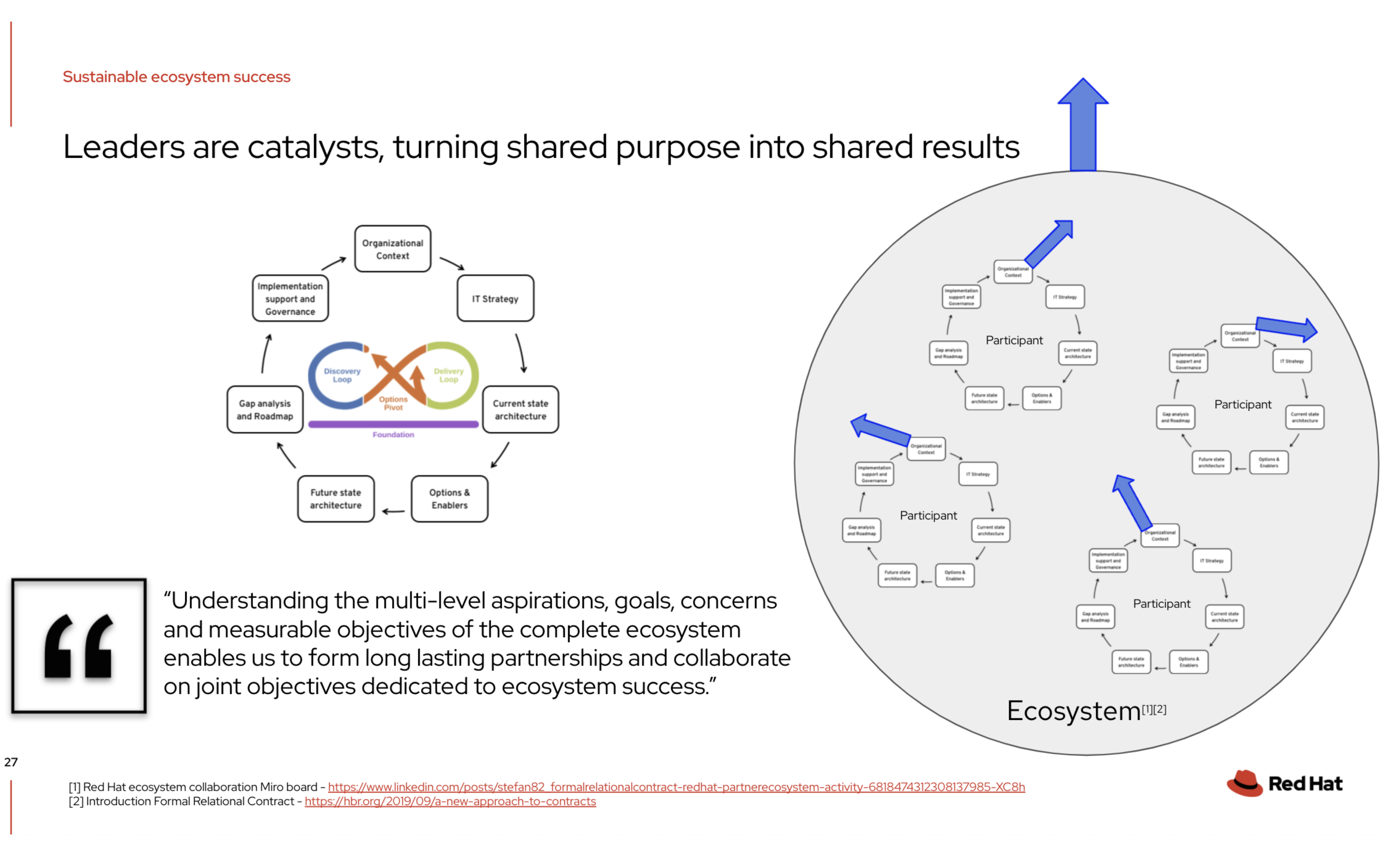
How to do Formal Relational Contract?
The 7 steps towards building a formal relational contract are:
1 - Social Contract. A way to enable team autonomy and self accountability. The foundation for feeling safe.
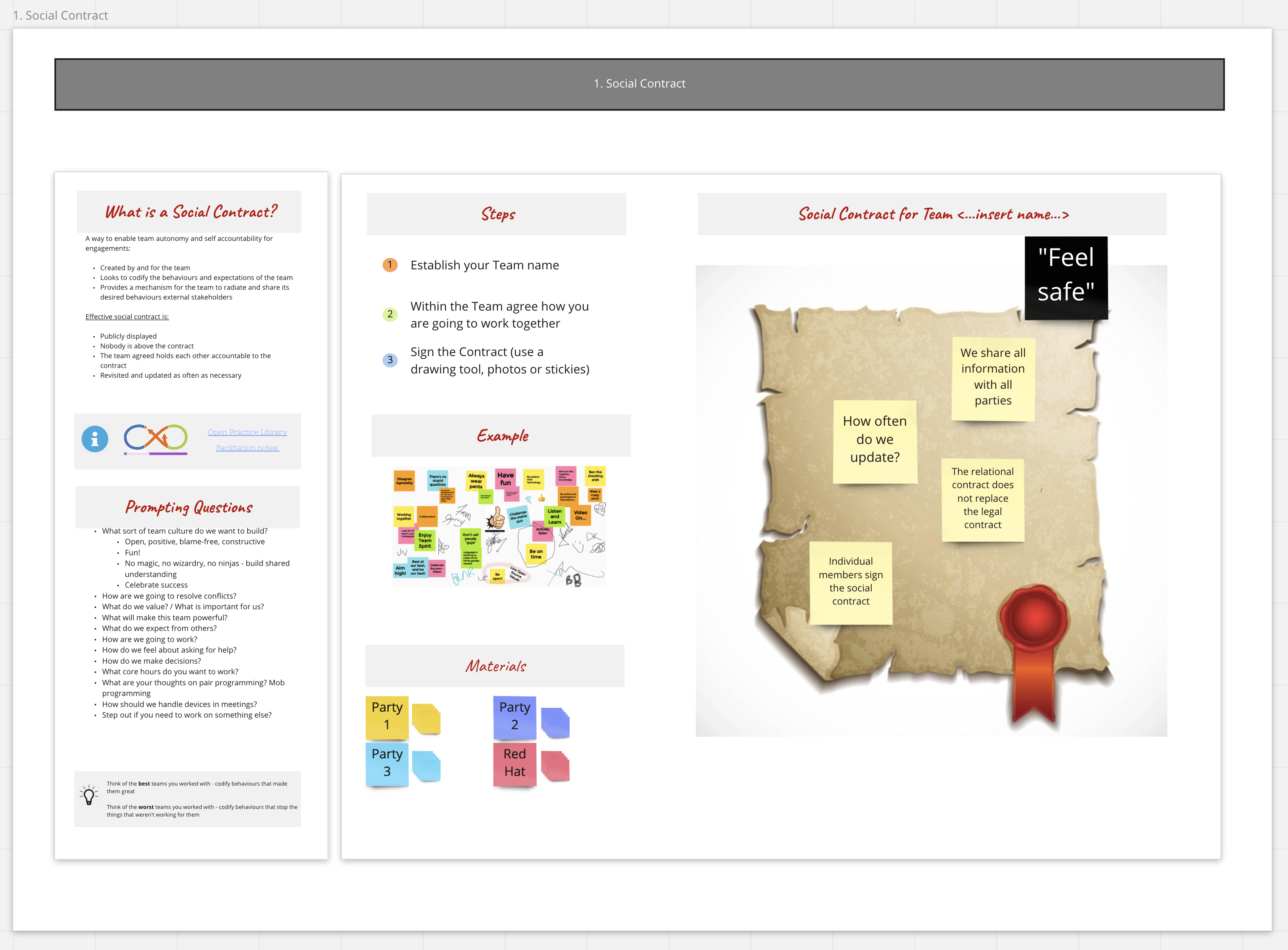
2- A foundation based on trust. Being transparent on aspirations, individual goals and concerns. Having multi-level relationships between parties.
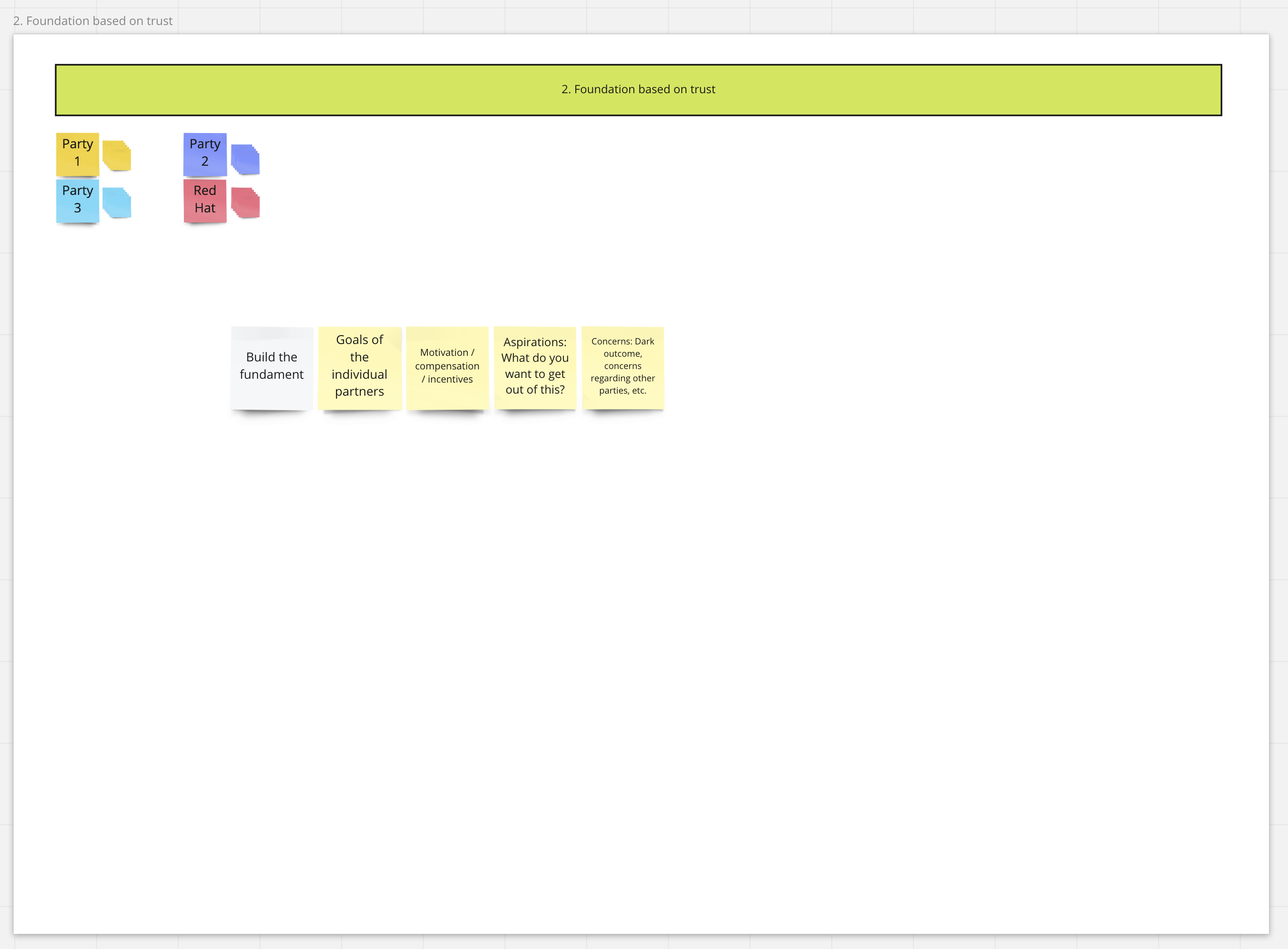
3- Set vision & goals for the ecosystem. Define a vision as well as desired outcomes, goals and tactical, measurable objectives. We use the Start at the End exercise to support us.

4- Adhere to the guiding principles: reciprocity, autonomy, honesty, loyalty, equity, and integrity. All parties share their interpretations of the guiding principles.
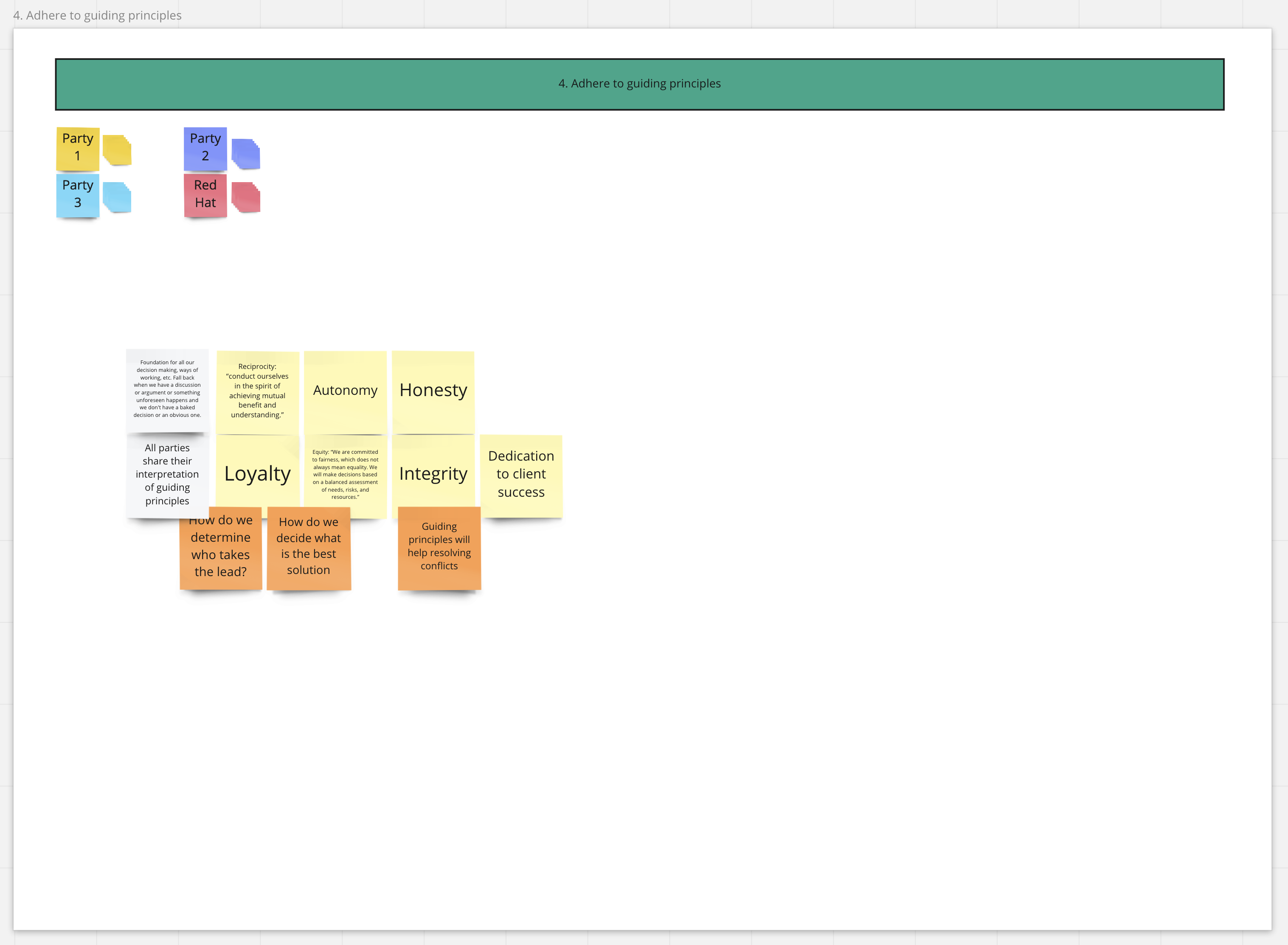
5 - Terms & Conditions to align to the defined principles. Responsibilities, pricing and metrics for example. Using the foundation this should be a joint problem solving exercise instead of a negotiation.
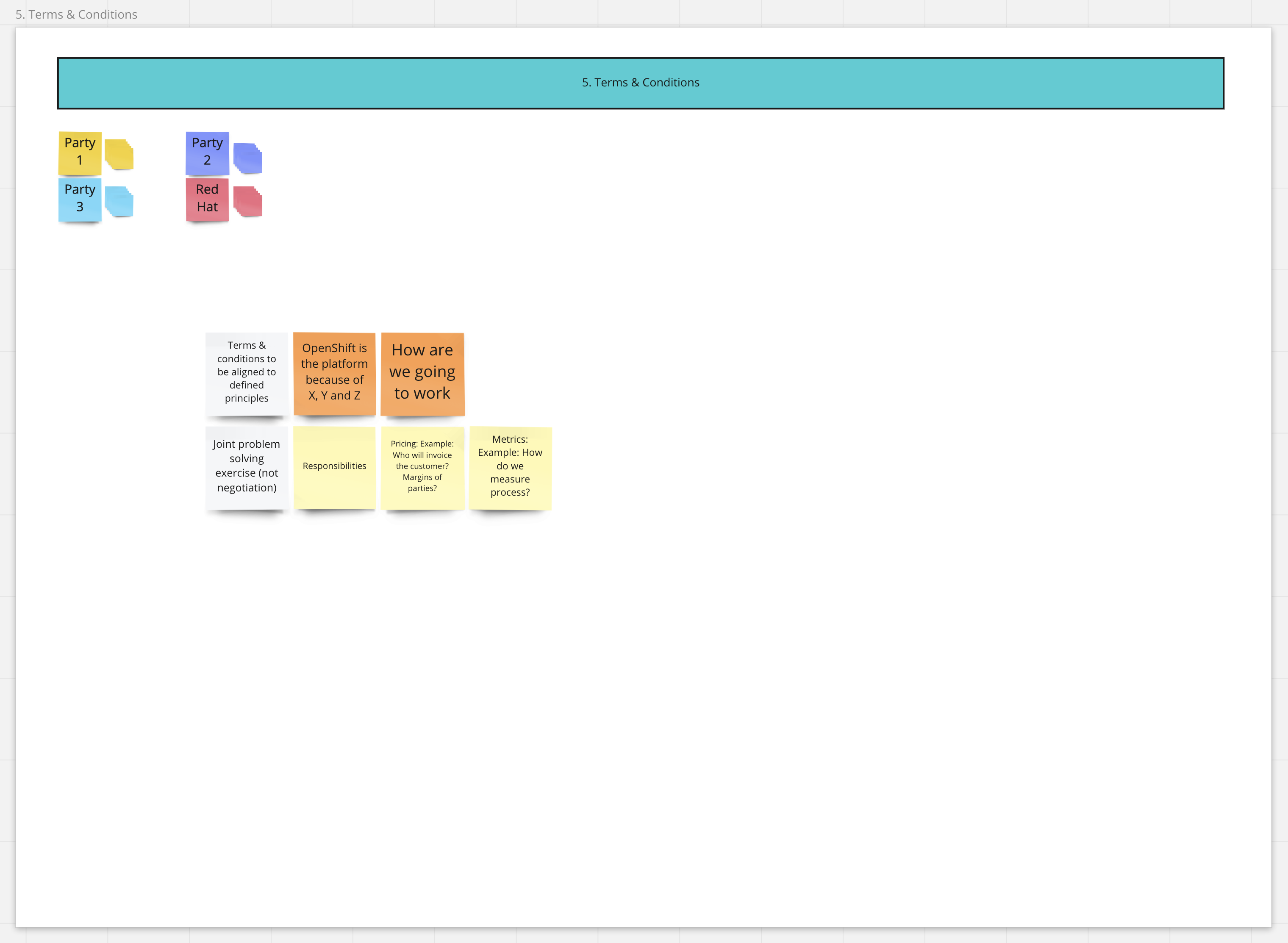
6 - Establish governance mechanisms (on top of T&C). Eg. governance teams, for example relationship, excellence, sustainability and best-value teams. Sustainability teams could for example accommodate scope updates, the new reality.
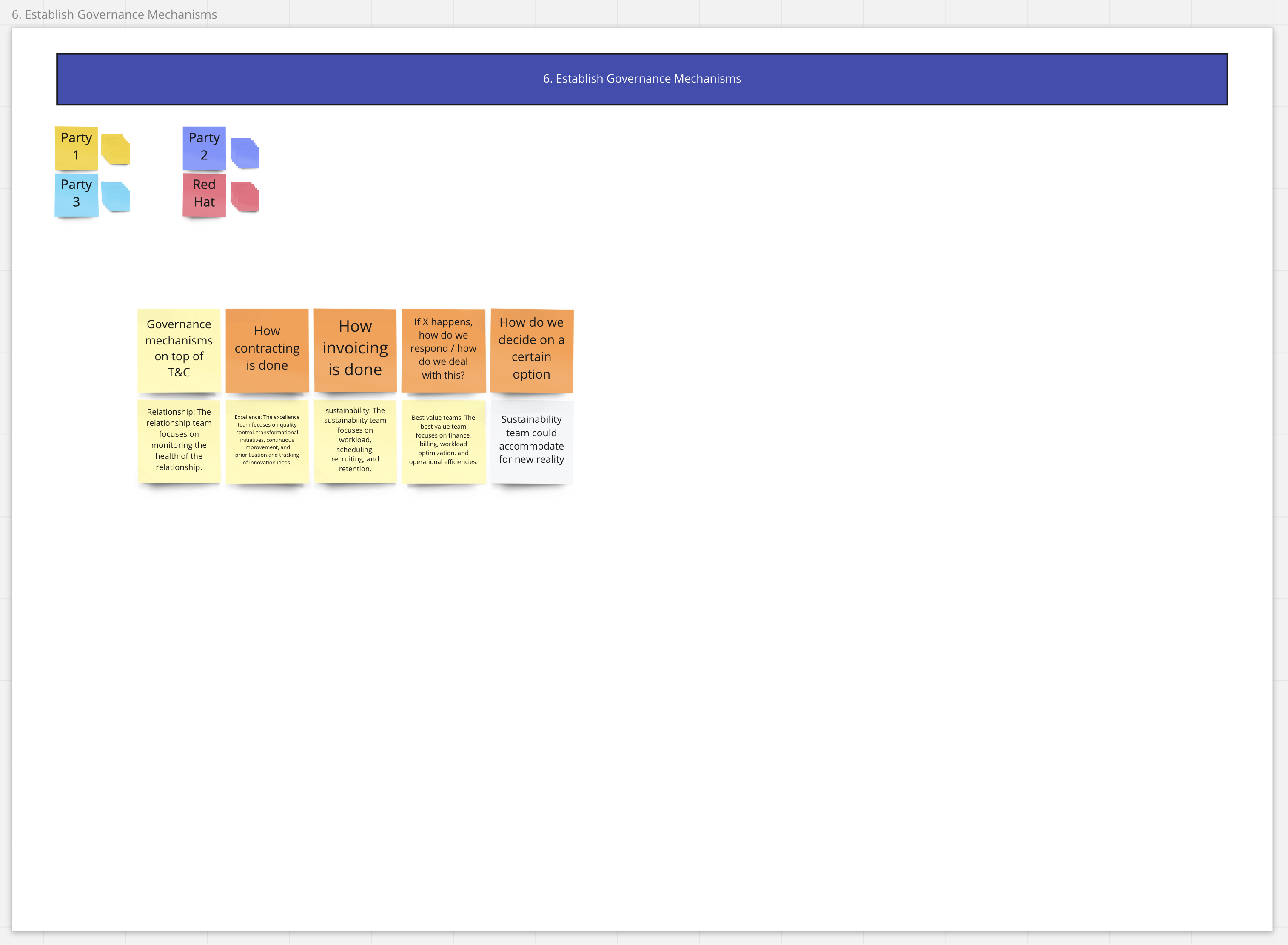
7 - Consolidate all learnings in a canvas for an overview. Do not forget to iterate the individual elements. For example regularly revisit individual goals, concerns, processes as well as joint-goals, etc.
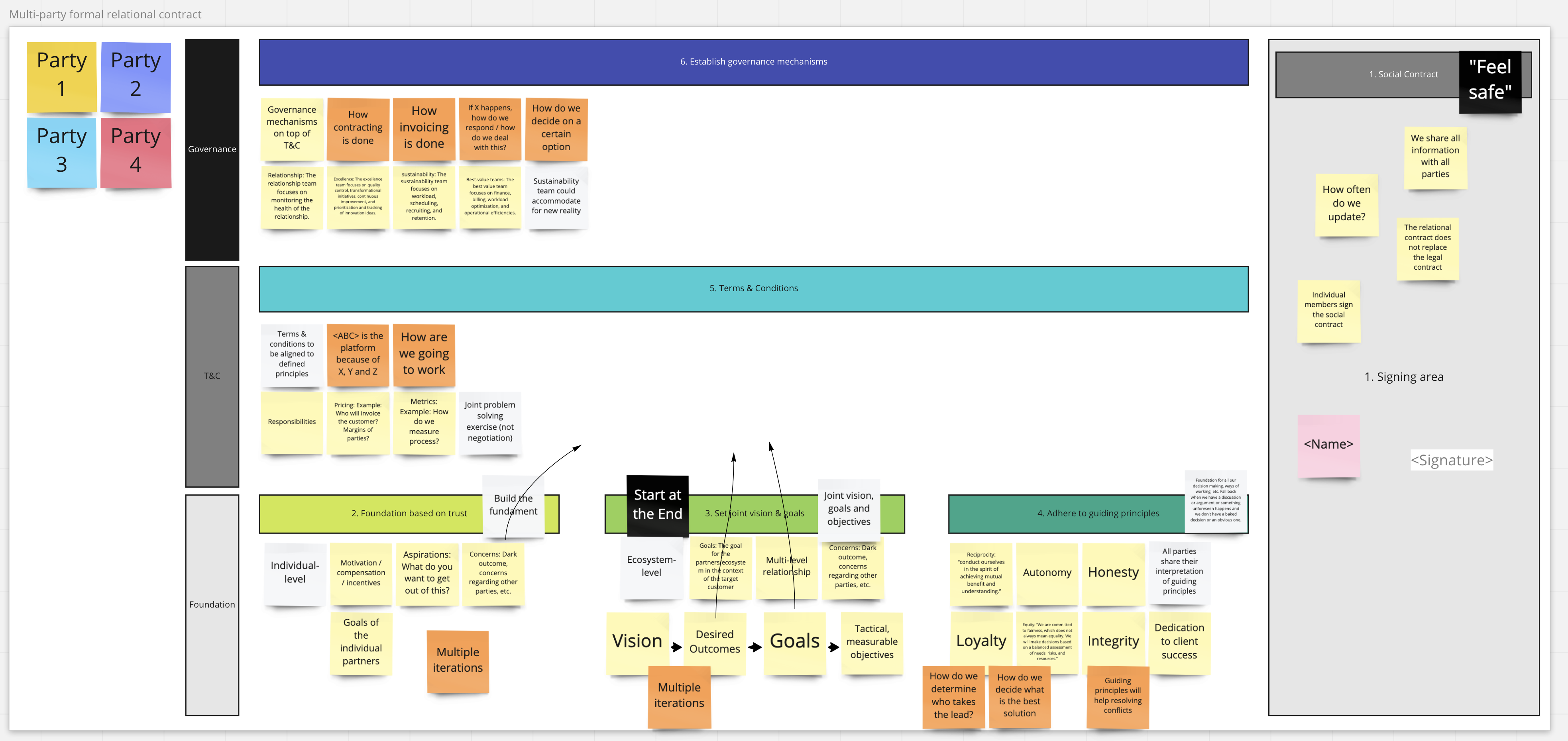
Look at Formal Relational Contract
Links we love
Check out these great links which can help you dive a little deeper into running the Formal Relational Contract practice with your team, customers or stakeholders.